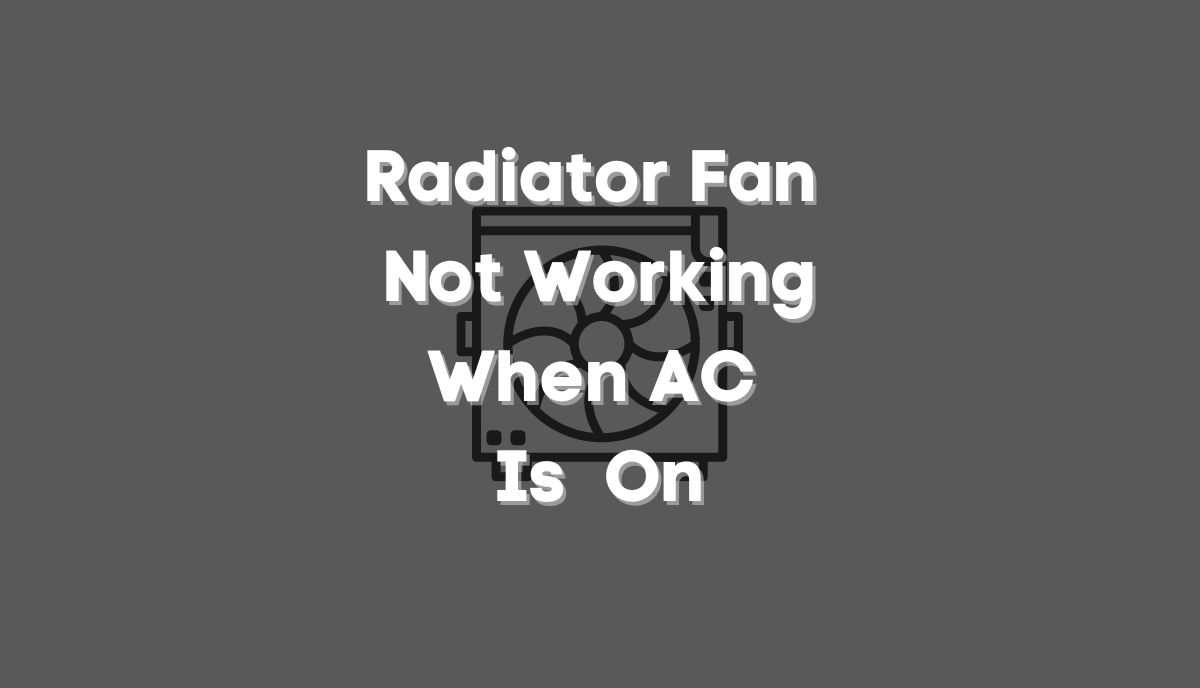You expect the radiator fan to run when you switch the air conditioner on. If the cooling fan refuses to work, one or more of the following is at fault:
1). The Thermo Fan Switch Is Dead
The radiator fan prevents the engine from overheating by pulling air from the atmosphere through the radiator to lower the coolant’s temperature. But how does it know when to turn on? The thermo switch signals the fan when the coolant crosses a specific temperature threshold.
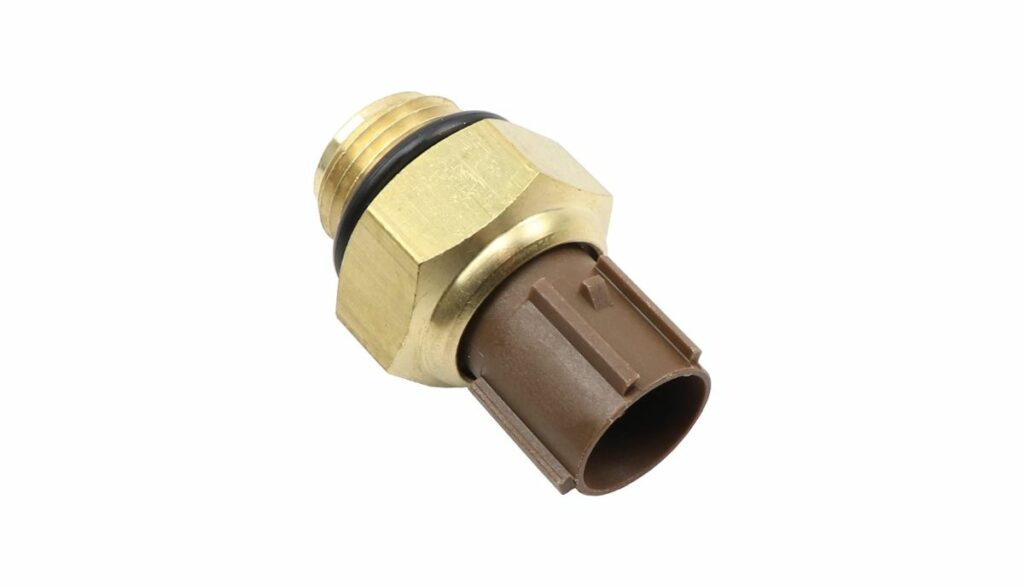
The switch will tell the fan to turn off when the coolant’s temperature falls.
The car exposes the switch to harsh conditions under the bonnet. It can also fail because of old age. A bad switch will send false data to the ECU, causing the fan to operate erratically or not at all.
How To Fix It?
A bad thermo fan switch will attract several concerning symptoms, including:
- A check engine light that keeps illuminating
- A fan that turns on and off unexpectedly or refuses to run.
- An engine that overheats because the fan will not run.
You can test the component’s voltage, resistance, and continuity to confirm your suspicions. You can apply the following solutions:
- Check the earthing point. Make sure it’s clean and tight.
- Follow the lead from the switch to the relay. Clean and tighten the terminals.
- Replace a faulty switch.
2). The Thermostat Is Defective

The thermostat will open and close to either permit or restrict the coolant flow. Some thermostats stick in the closed position and prevent the coolant from flowing. This encourages the engine to overheat.
Other thermostats will stick in the open position. This allows the coolant to flow continuously, forcing the engine to run at a colder temperature than usual. The following symptoms will point to a bad thermostat:
- High temperature under the hood.
- Fluctuating temperature.
- Low coolant levels because of leaks
- Poor fuel economy
- Strange sounds.
How To Fix It?
- Use an infrared thermometer to check the temperature under the hood. Is the engine running hotter than usual? What about the radiator hose? You should detect heat in a hose carrying hot coolant. The hose will remain cold if the coolant doesn’t flow due to a closed thermostat.
- You can follow the radiator hose to locate the thermostat.
- Don’t remove the hose unless you have a container in place to catch the fluid waiting to drain out of the radiator.
- Remove the housing to retrieve the thermostat.
- You can place the part in hot water to determine whether it opens and closes as expected.
- Install a new thermostat if the old one fails the test.
3). The Coolant Temperature Sensor Doesn’t Work
Ishfaque Ahmed from the Department of Automotive Software Engineering at Technische Universitat Chemnitz in Germany has identified the temperature sensor as a component that tracks the engine temperature.
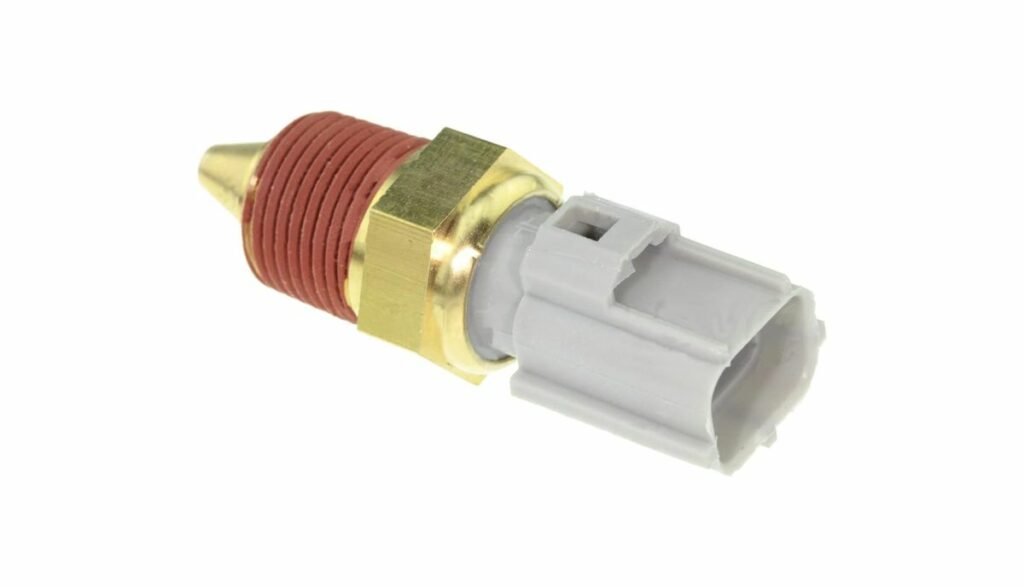
The Engine Control Module controls everything from the ignition timing and fuel injection to transmission shifting and the radiator fan. But it can’t do its work without the temperature sensor’s information.
The sensor gets a constant reference voltage (5V) from the ECM. The sensor’s resistance decreases as the temperature rises, reducing the voltage output and alerting the ECM. Expect the following symptoms when the coolant temperature sensor fails:
- The engine will overheat.
- The ‘Check Engine’ light will illuminate.
- The car may refuse to start.
- Temperatures on the gauge will fluctuate.
- The radiator fan will run continuously or not at all.
How To Fix It?
The coolant sensor can fail because of corroded terminals, bad connections, and low coolant levels, to mention but a few. Apply the following steps:
- Get a voltmeter. Run the positive lead to the signal terminal, and the negative lead to the chassis.
- Cold start the engine.
- Make sure the readings match the information in the manufacturer’s documentation (3V – 4V).
- Retake the readings after the engine warms. They should drop.
- A reading of 5V will prompt the mechanic to check the signal terminal connection and sensor’s ground contact because it suggests an open terminal.
- A reading of 0V requires the mechanic to check the connection between the ECM and the sensor. Either a short circuit occurred, or the sensor doesn’t have power.
- If the 0V reading persists, troubleshoot the ECM.
- A mechanic will use an OBD Scanner to check the error codes.
- If the mechanic decides to replace the sensor, the procedure may cost $100 or more. The part is inexpensive. You can get a replacement for $20. The labor fees are the problem.
Some cars have a coolant temperature switch instead of a sensor. While the sensor signals the ECM, the switch works directly with the fan, turning it on at specific temperatures.
4). The ECM Is Bad
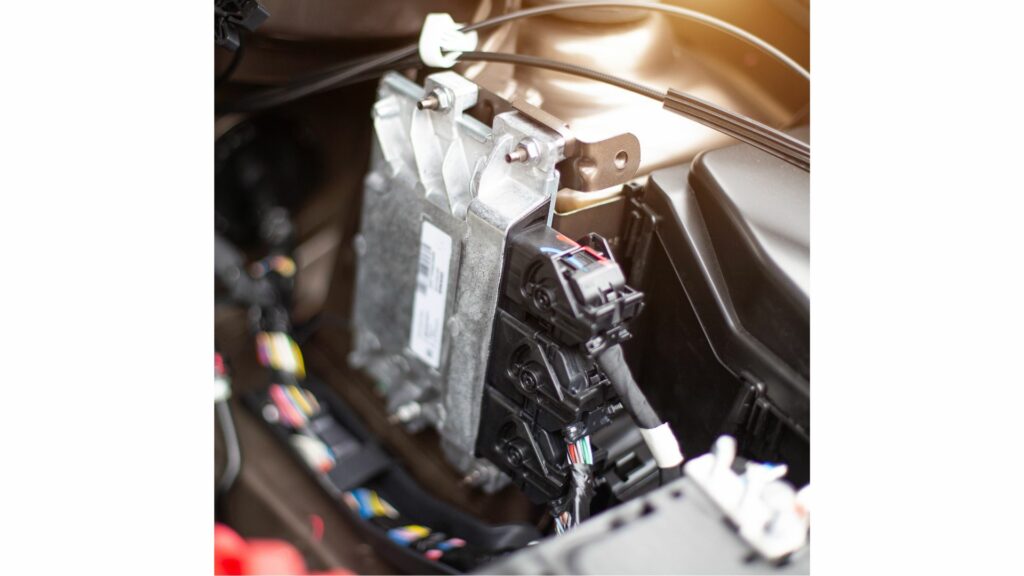
This paper in Global Scientific calls the ECM the brain of the car. It runs the engine management system and typically controls the ignition timing, air/fuel mixture, emissions control, and more.
No one wants to return to the old days when vehicles relied on mechanical and pneumatic adjustments. However, sometimes ECMs are more trouble than they are worth. They can disrupt every aspect of the vehicle’s operations once they fail, including the radiator fan. Common symptoms of a bad ECM include:
- The car won’t start.
- The engine will manifest erratic behavior.
- The engine’s performance will deteriorate.
- Poor fuel economy.
- The ‘Check Engine’ light will illuminate.
- Overheating engine.
How To Fix It?
ECMs can fail because of short circuits, excessive vibrations that damage circuit boards, and temperature fluctuations. You may spend anywhere between $800 and $2000 on a replacement ECM.
Some ECMs are too sophisticated for a conventional repair shop to tackle. You need specialized mechanics that charge higher labor fees.
5). You Have Loose Connections Or Frayed Wiring
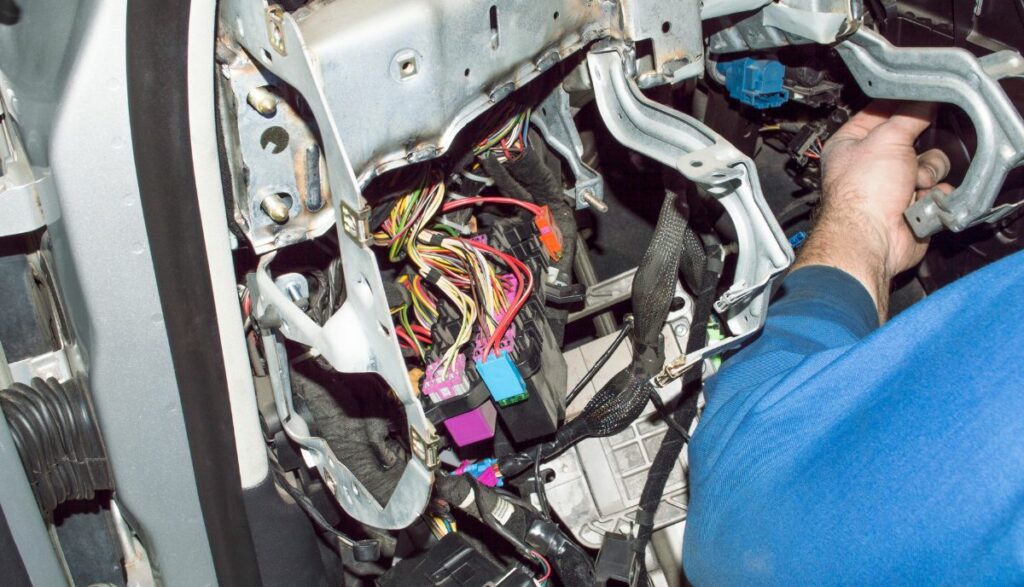
The wiring runs everything in your car. Broken wires can prevent power and signals from reaching their destinations. Loose connections are convenient because you solve the problem by tightening them. Frayed or broken lines are challenging because they are not as easy to locate.
How To Fix It?
You need a mechanic to troubleshoot the electrical system. They can search for burned wires, short circuits, and blown fuses. A layperson can check the wiring related to the fan, switches, and sensors. But what if the problem originates from an electrical fault in a different section of the car?
Do you have the technical knowledge to check the voltage, continuity, and resistance of the different systems? You may possess an OBD scanner, but can you interpret the error codes? You don’t want to waste money on the wrong solution because you misunderstood an error code.
You can replace damaged relays and blown fuses where necessary. The manual will show you where to find the fuse box. Otherwise, leave extensive electrical work to an expert, preferably a specialist who understands your model’s unique features and functions.
Are Radiator Fans Supposed To Run When AC Is On?

Yes, the radiator fan should run when you activate the air conditioner. The air conditioner works by moving heat in and out of the cabin. The vehicle uses the fan to dissipate excess heat. Keep in mind that an AC adds a load to the engine, elevating the temperature. The radiator fan is vital because it keeps the engine’s temperature within an optimal range.
What Happens If Radiator Fan Won’t Work When AC Is On?
Some cars have an auxiliary fan that turns on when you start the air conditioner. Others rely solely on the radiator fan, which only turns on when needed. In other words, what you describe as a malfunction is merely a delay.
But if the radiator fan refuses to work in a car with an active AC, the engine will overheat. The coolant will continue to collect and carry heat away from the engine. But without a fan to cool the coolant in the radiator, it will boil, wreaking havoc on the cooling system. The engine will also suffer.
You will either lower its lifespan through rapid wear and tear or destroy it altogether. Even if the AC relies on an auxiliary fan, you still need the radiator fan. The only exception is a car moving at 35mph or more.
The radiator fan is only necessary when the vehicle is stationary. The airflow in a moving car will manage coolant temperatures.
Will Car AC Work If Radiator Fan Is Not Working?
You can turn the AC on even if the radiator fan is defective. The air conditioner will work. However, the air conditioner’s performance will fall if your car uses the fan in the condensing and sub-cooling processes. This may happen immediately or gradually.

